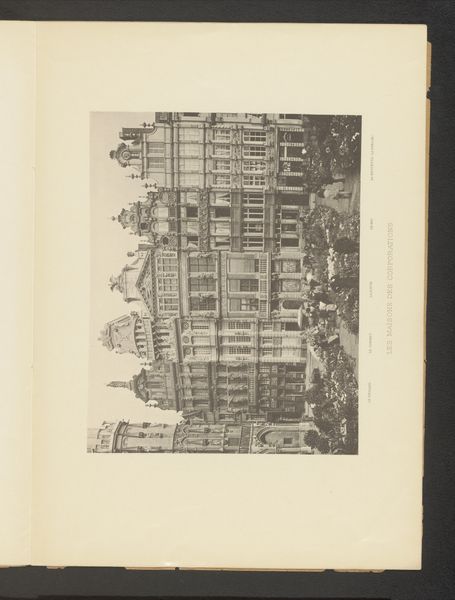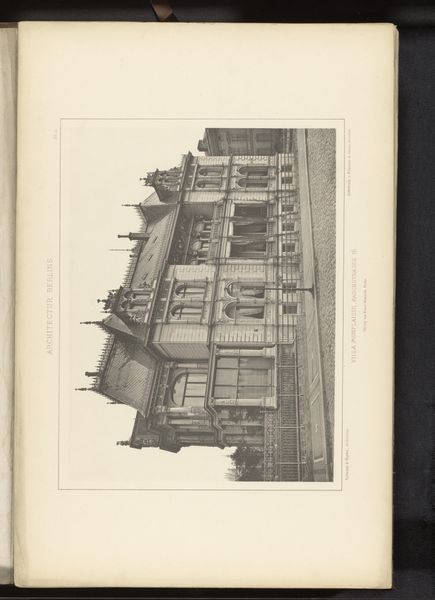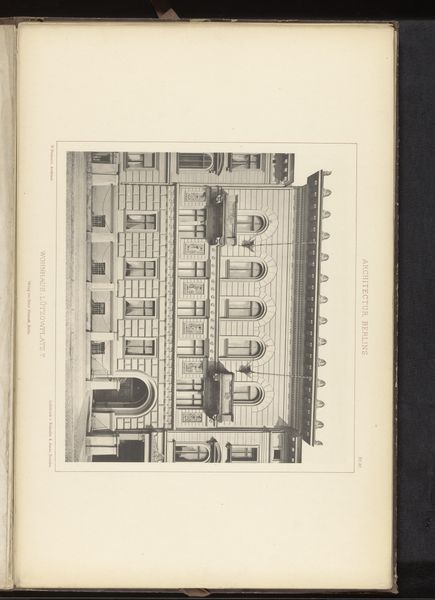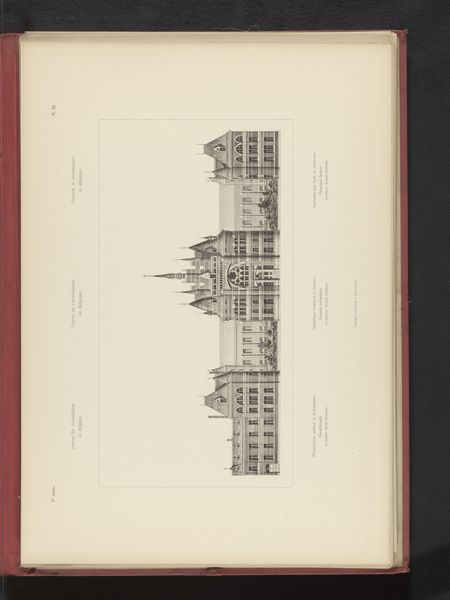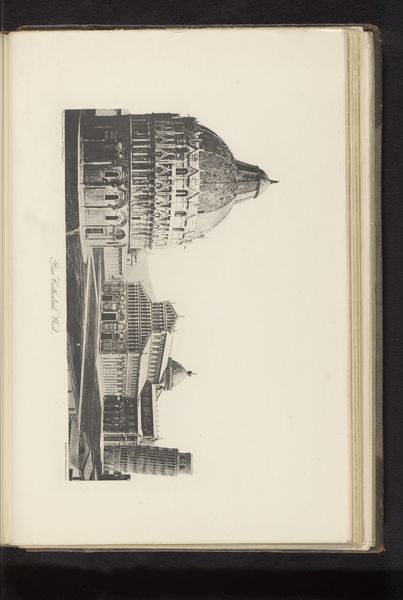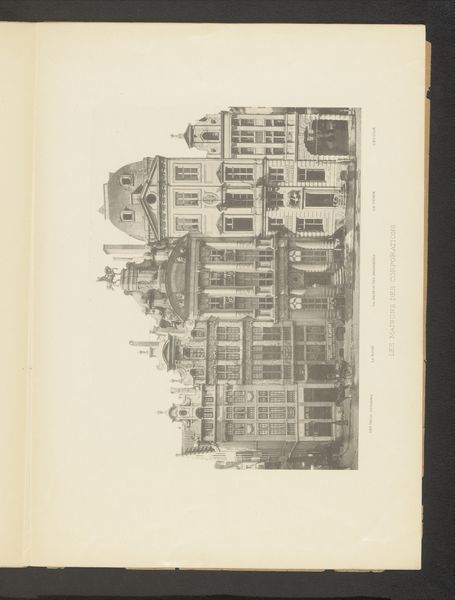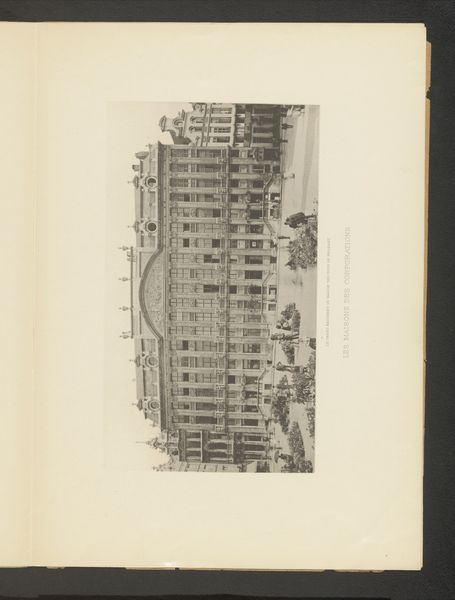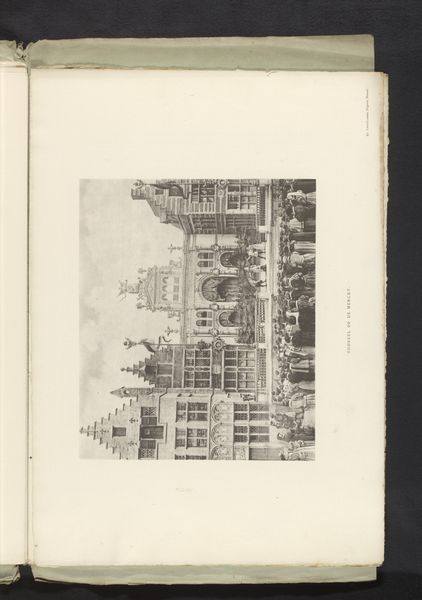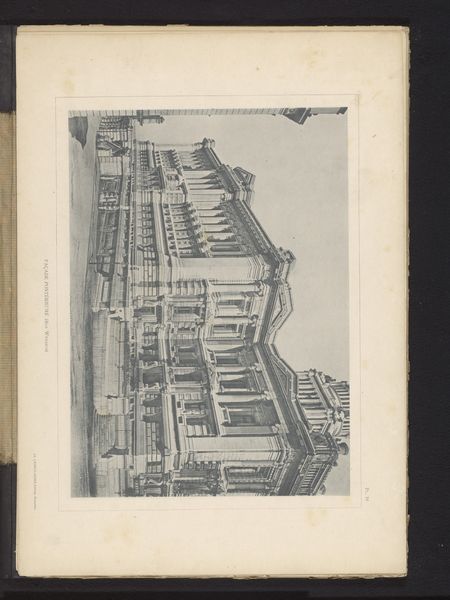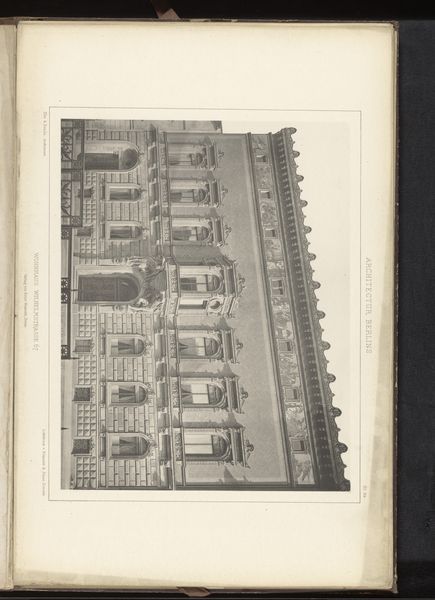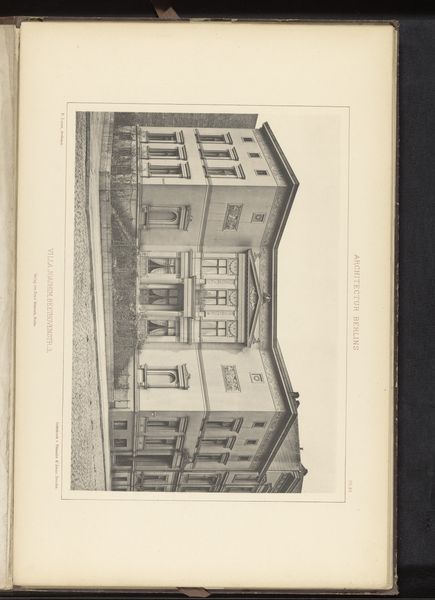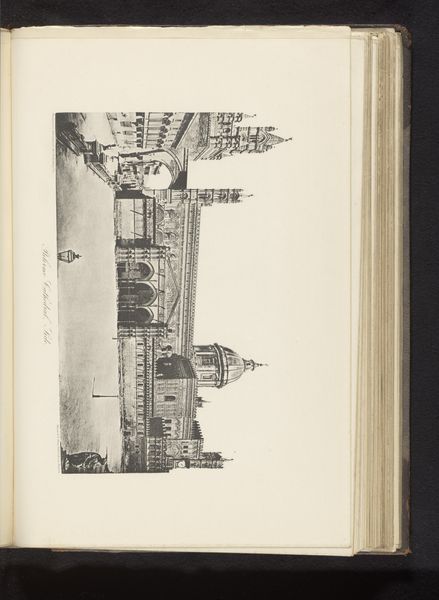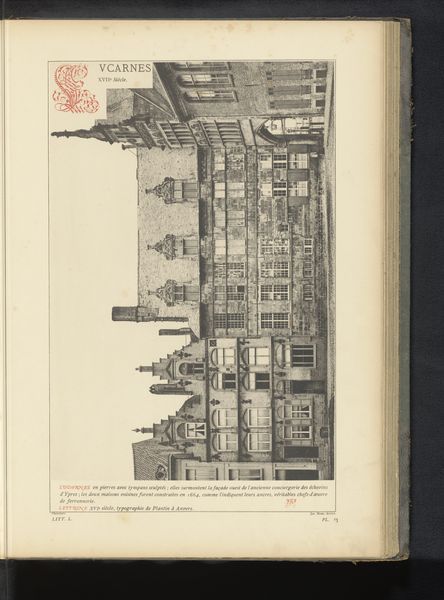
print, photography, architecture
# print
#
photography
#
cityscape
#
architecture
Dimensions: height 199 mm, width 273 mm
Copyright: Rijks Museum: Open Domain
Curator: This photographic print, dating from before 1899, offers a "View of the Guild Houses on the Grote Markt in Brussels." The photographer remains anonymous, capturing a fascinating slice of Brussels' architectural history. Editor: There's an imposing stillness here. Even in the details of bustling commerce indicated by awnings and figures, the monochromatic palette evokes a quiet grandeur—the scene seems both temporal and somehow immutable. What's most compelling is the image's texture; you can almost feel the carved details of the facades. Curator: Absolutely. Guild Houses were not just buildings; they were visual assertions of power and identity for various trades. Notice how each facade is unique, almost vying for attention? The iconography is subtle, but suggestive of each guild's activities, contributing to a complex civic visual language. What is communicated by those images in terms of the stories they relate about Brussels at the time? Editor: Well, these Guild Houses signify a specific societal structure, one where trade guilds wielded considerable influence. But they're also expressions of wealth and civic pride – assertions of power in a way that's gendered masculine in terms of patriarchal organization. I wonder, what stories are purposefully not being told about those who constructed or inhabited those structures? Curator: That’s a critical point—the absence speaks volumes. Consider the meticulous composition; the photographer's eye directs our gaze upwards. A symbolic gesture perhaps? Brussels at the turn of the century saw this architecture as progress and as the basis of an elite social structure. This architectural iconography bolstered claims to dominance and superiority. It reinforces the guild’s place in that social hierarchy. Editor: It strikes me how images like this, intended as documentation, quickly become charged with layers of ideology. These stately houses present as proud assertions of order, but they can also signify rigid class structures, patriarchal authority, and systems of production rife with inequalities. As an image produced prior to 1900, what historical context surrounding these structures would lead a contemporary viewer toward particular conclusions? Curator: I see what you mean, though I find myself returning to the remarkable detail captured here. The way light plays across the sculpted surfaces, it evokes not just a building but a tangible cultural heritage— a sense of memory embedded in the very stone. Editor: It's a beautiful yet loaded memory, isn’t it? An excellent example of how built spaces are visual codes about the world that also function to uphold very real and deeply rooted power dynamics. Curator: Yes, it allows one to reevaluate those assumptions and challenge traditional perceptions of social power. Editor: Indeed. It also prompts us to examine how our interpretations of the image affect our present understanding of ourselves and our relationship with those systems today.
Comments
No comments
Be the first to comment and join the conversation on the ultimate creative platform.
